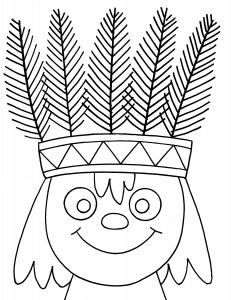Directed Drawing and Art Skills for Children: The Most Beautiful Headdress
 Art is a critical component of education as well as a means of self-expression. Directed drawing, the process of step by step drawing instruction, is one component of art instruction and essential for building confidence and art skills. However, participation in directed drawing classes also helps develop observation skills, attention to detail, fine motor and organizational skills, as well as a strong visual vocabulary. These art skills require time, patience and repetition to allow the child’s hands catch up to what the eyes can see.
Art is a critical component of education as well as a means of self-expression. Directed drawing, the process of step by step drawing instruction, is one component of art instruction and essential for building confidence and art skills. However, participation in directed drawing classes also helps develop observation skills, attention to detail, fine motor and organizational skills, as well as a strong visual vocabulary. These art skills require time, patience and repetition to allow the child’s hands catch up to what the eyes can see.
This is an excerpt from my book, Being Visual, and reflects the exact moment when I first experienced this phenomenon in the classroom.
The Most Beautiful Headdress
Paige, a four-year-old Montessori student, had been in class week after week for several months. She listened well, followed directions and was openly enthusiastic. Yet her drawings didn’t reflect the understanding she demonstrated in class. When the coloring portion of class came, whatever she had been able to draw was usually obliterated under a chaotic mess of crayon or marker. Each week, I touched base with Mom, sharing news from the classroom. Each week, Mom enjoyed whatever Paige completed and was pleased she had participated. Each week, my own doubt grew and I began to wonder if, in fact, I really could teach any child how to draw and color. And each week we pressed on, approaching every new lesson with expectation and enthusiasm.
One day, we drew an Indian headdress, a day forever etched in my mind and heart. Our class had been drawing together on Monday afternoons for nine weeks. On this particular Monday, the students gathered, took their usual places at the table, and we looked at a real headdress. We talked about the shape of the headband, the tall feathers standing upright and the designs and colors. As we began to draw out the lesson, I took special note of Paige. Her fine motor skills seemed more controlled, and it was reflected in her work. Her drawing was full of wonderful detail and really looked like an Indian headdress! As we began to color, we followed our usual coloring techniques, and again Paige moved through this part of the lesson, clearly demonstrating increased abilities.
While I was silently jumping up and down with delight, Paige proceeded as she did every week, faithfully drawing and coloring with all her heart. When she finished, we mounted her drawing, as we did every week. She smiled, as always, and headed back to her regular classroom. I was moved to great emotion, as I admired the most beautiful drawing of an Indian headdress. In just one week, there had been a profound transformation of Paige’s abilities, and the proof was on the paper. When her mother came to view the week’s drawing, it was with tears in my own eyes that I presented Paige’s finished piece. Mom was pleased as always and an extra wide smile crossed her face.
The event signified a broader kind of understanding for me. Every week that Paige had been in class listening, looking, drawing and coloring, she was processing every bit of the learning experience. But her physical body had to catch up with her mental processes. When her fine motor skills increased, her hands could finally do what her mind could conceive. Everything she had been exposed to over those nine weeks came pouring out of her that day. Paige continued to operate at this new level, and each week her drawings reflected her increased abilities. Over the years, this experience has been repeated in many classrooms, with many other students, but Paige and her Indian Headdress will forever hold a special place in my heart.
What is your child’s learning style? There are three basic learning styles; visual, tactile, and auditory. Take the test and get immediate results: Is your child a visual learner?
 |
Bette FetterFounder and CEO of Young Rembrandts and Author of Being Visual |










